Catheter-Associated Urinary Tract Infection
- A common hospital-acquired infection.
- Symptoms: abdominal pain, frequent urination, burning, and fever.
- About 40% of all healthcare-associated infections (Wynne et al., 2014).
- $450 million for associated costs (Wynne et al., 2014).
Catheter-associated urinary tract infection (CAUTI) is one of the most common hospital-acquired conditions that affect millions of people around the world. Its main symptoms include abdominal pain, frequent cases of urination with changing color, burning, and fever. A patient should inform a healthcare provider about these changes as soon as they are discovered. About 40% of all infections observed in hospital settings are attributed to CAUTI (Wynne et al., 2014). In the United States, the government and healthcare organizations spend approximately $430-$450 million annually (Wynne et al., 2014). This condition is caused by poorly controlled catheter use. Therefore, multiple interventions and protocols have been developed to reduce these risks. Catheters have to be used under certain conditions only and must be removed as soon as they are no longer needed.
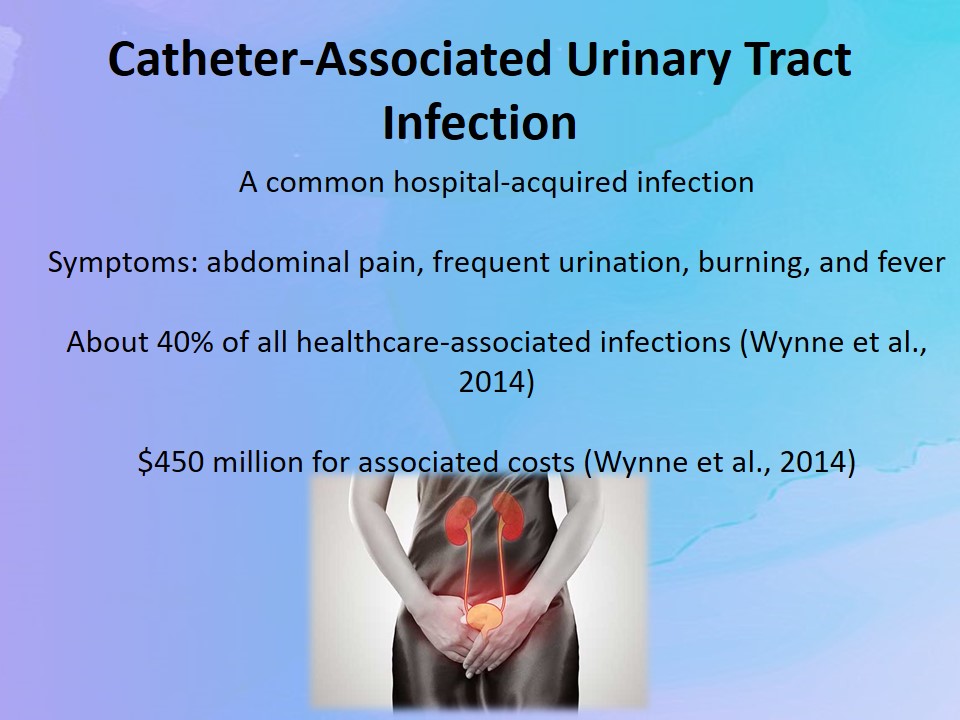
Nurse-Sensitive Indicators
- Medical measurements that help:
- Evaluate nursing care;
- Promote quality improvement;
- Maintain costs and efforts;
- Develop effective resource plans;
- Three main types:
- Structural;
- Process;
- Outcome.
During the last several decades special attention has been paid to the concept of nursing-sensitive indicators (NSIs). Researchers continue to investigate the process of nursing care delivery and introduce new initiatives and interventions (Heslop & Lu, 2014). NSIs are viewed as the main measurements with the help of which it is possible to determine and share numerical data within a healthcare setting (Heslop & Lu, 2014). These indicators aim at evaluating nursing care and promoting quality improvement through the analysis of nurse staffing issues and the evaluation of patients’ outcomes. There are three main types of NSIs:
- Structural – the supply of nurses, available training and education courses, and skill level identification;
- Process – patients’ and nurses’ satisfaction and assessments, as well as interventions and change management;
- Outcome – the comparison of health problems over different periods.
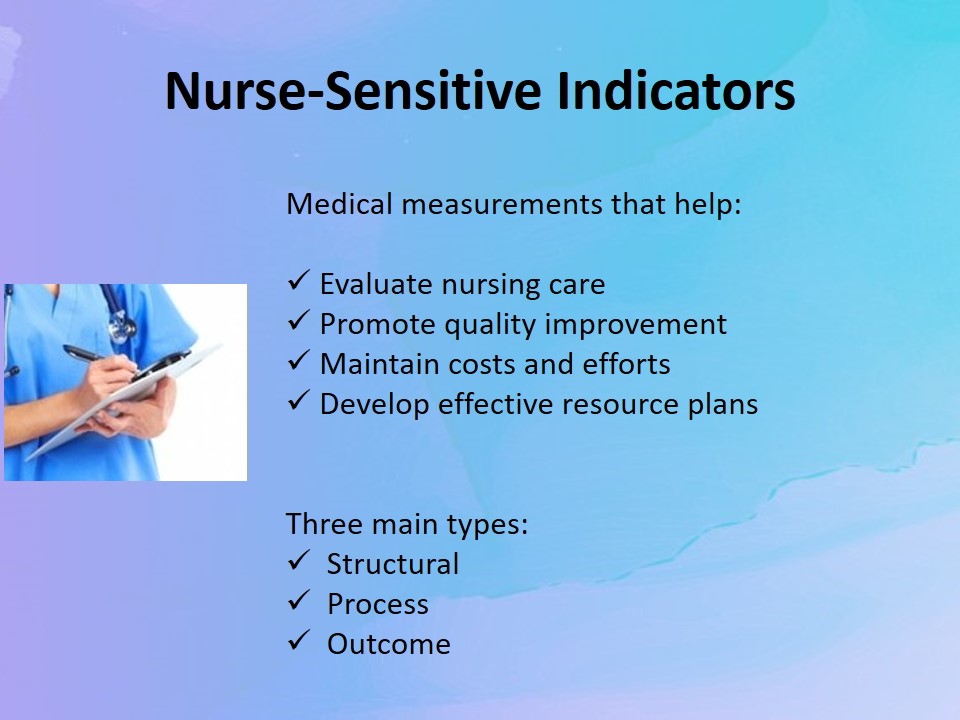
NSIs and CAUTI
- Nurse knowledge about UTI and catheter-associated problems;
- Patient satisfaction with nursing care;
- Decrease in CAUTIs in US hospitals.
In the chosen patient’s condition, CAUTI, it is possible to identify several different types of NSIs:
- Structure NSI: the improvement of nurse knowledge about UTI through training and education programs that are focused on catheter-associated problems;
- Process NSI: the assessment of patient satisfaction levels in hospital settings and the evaluation of nursing care that is based on the opinions of both patients and their families;
- Outcome NSI: the control of CAUTI cases in hospitals that is based on nurse reports and hospital records.
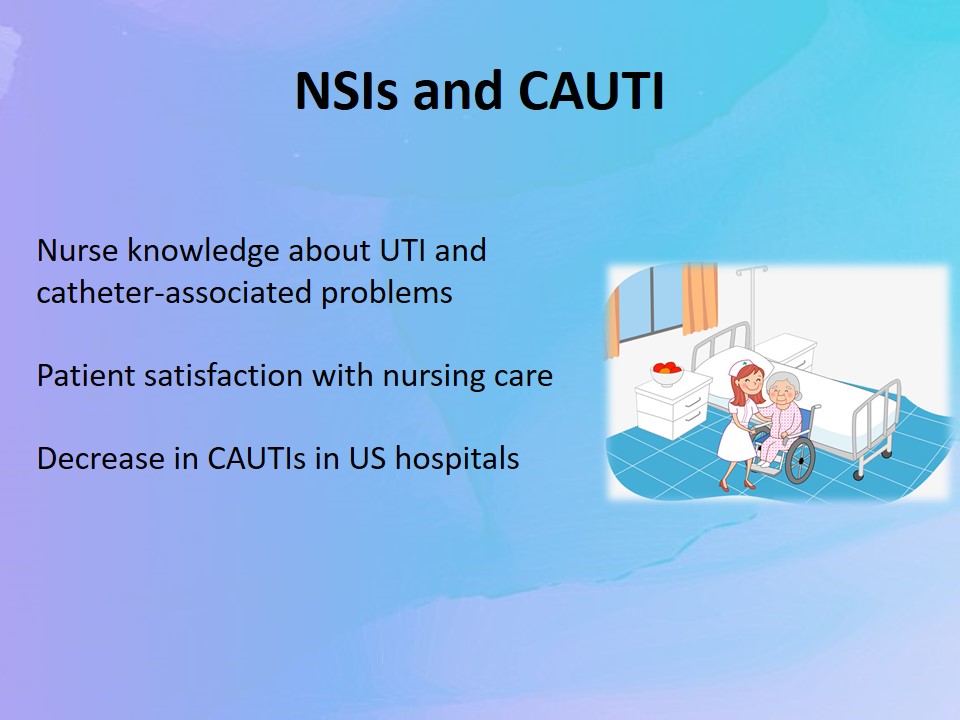
Plan of Care: PDCA
- Reduce the number of CAUTIs in hospitals;
- Educate and train nurses about how to take care of patients according to a catheter-based treatment plan;
- Check catheters regularly and remove them when no longer needed;
- Communicate with patients, increase nursing rounds, and report on the outcomes weekly.
The plan of care with regard to indicators for CAUTI should correspond to the four-step management method known as Plan-Do-Check-Act or PDCA:
- It is PLANNED to reduce the number of CAUTIs among patients in hospital settings;
- It is expected to DO the following: educate and train nurses regularly so that they can improve their knowledge of care for patients who have to use catheters as a part of their treatment plans;
- It is necessary to CHECK all patients with catheters regularly and be sure to remove them when they are no longer needed for treatment;
- Finally, nurses should ACT properly to meet the goals of the plan, including communicating directly with patients about their health conditions, increase nursing rounds, and report on any changes that occur with patients.

Structural Indicators and Improvement
- Find a person to train nurses on a regular basis.
- Schedule education and training courses.
- Choose a place and equipment for lectures and training.
- Develop CAUTI prevention guidelines and policies.
- Create tests for nurses.
Implementation of structural nursing-sensitive indicators to improve CAUTI outcome occurs in several stages:
- A specially trained person is chosen to educate nurses in their setting;
- Schedules of training and education programs should not interrupt the working process;
- A quiet place must be found for lectures and training;
- An educator has to cooperate with nurses and develop clear guidelines to prevent CAUTIs in acute care;
- Nurses can take tests to check their level of knowledge and preparedness to work with patients.
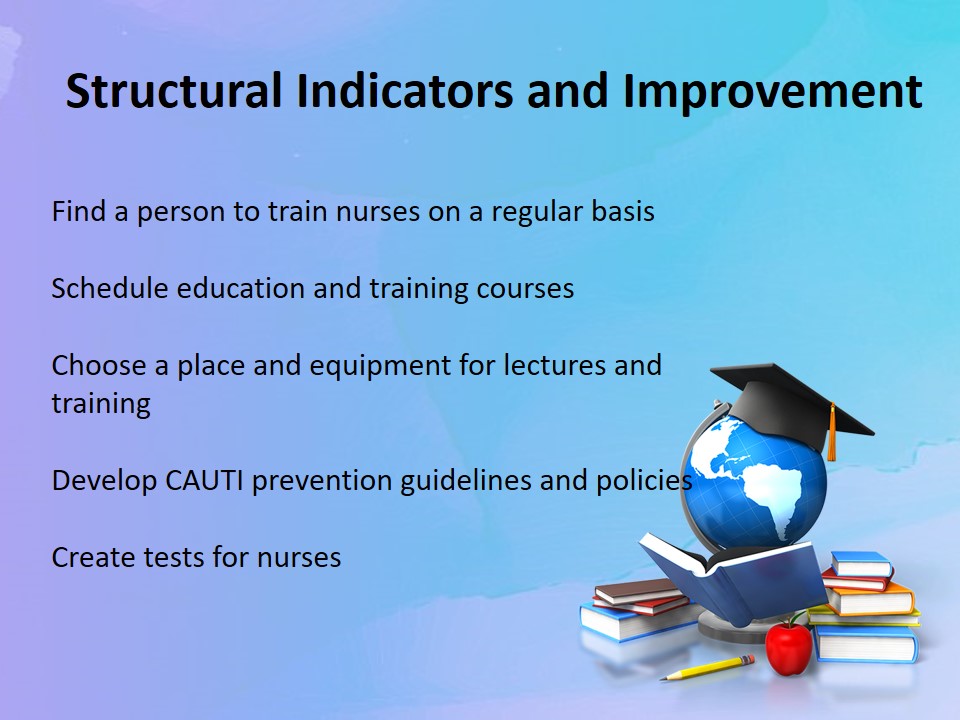
Process Indicators and Improvement
- Patients check:
- Nursing care delivery time;
- Communication with patients and families;
- Access to medical information;
- Nurses check:
- Period of catheter placement;
- CAUTI symptoms;
- Urine culture.
The improvement of CAUTI indicators in hospital settings may be achieved through two types of assessments:
- The assessment of nurses by patients includes the evaluation of nursing care delivery time, the style of communication with patients and their families, and the access and quality of medical information that should be offered to patients;
- The assessment of patients by nurses includes the time when a catheter is placed and has to be removed, the presence/absence of CAUTI symptoms, and the analysis of the urine culture that should occur at least two times per day.
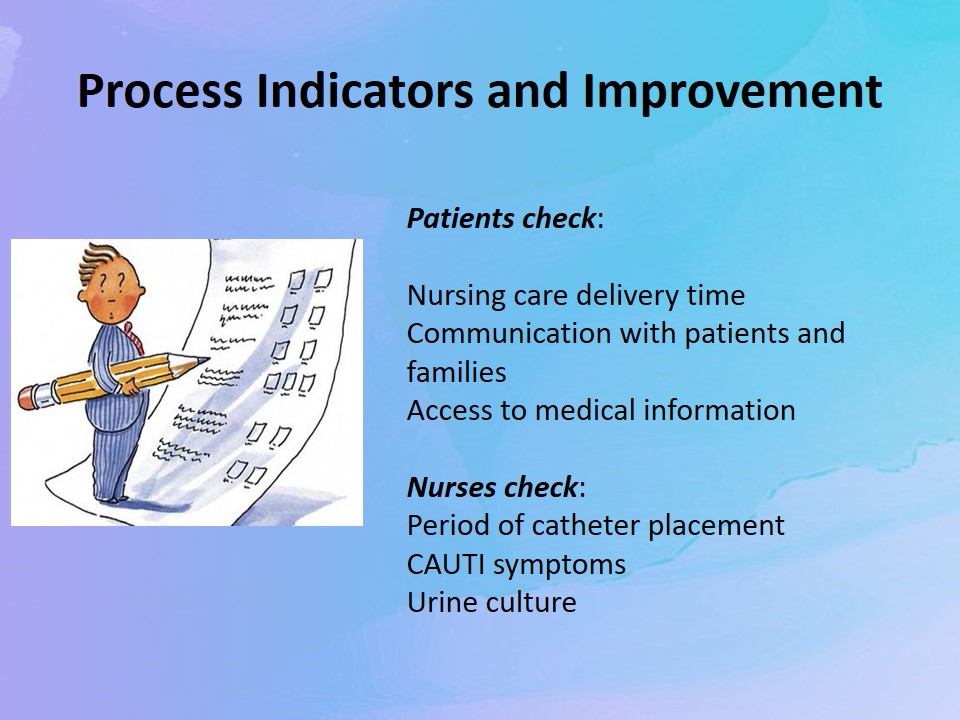
Outcome Indicators and Improvement
- Pre- and post-calculations of CAUTI rates.
- Nurses’ ability to identify CAUTI’s risks.
- Management checklists.
- Reduction of CAUTIs in patients.
- No deaths caused by CAUTIs.
The outcome of NSIs play an important role in the improvement of nursing care that can be offered to patients with CAUTI risks. A list of goals should be achieved at the end of the training intervention:
- Calculations of CAUTI rates before and after the intervention are required;
- Nurses have to identify the risks of CAUTIs and prevent the development of new symptoms;
- All hospital wards should be equipped with special management checklists for nurses;
- The reduction of CAUTIs in patients is observed;
- Zero deaths because of CAUTIs are reported in hospitals.
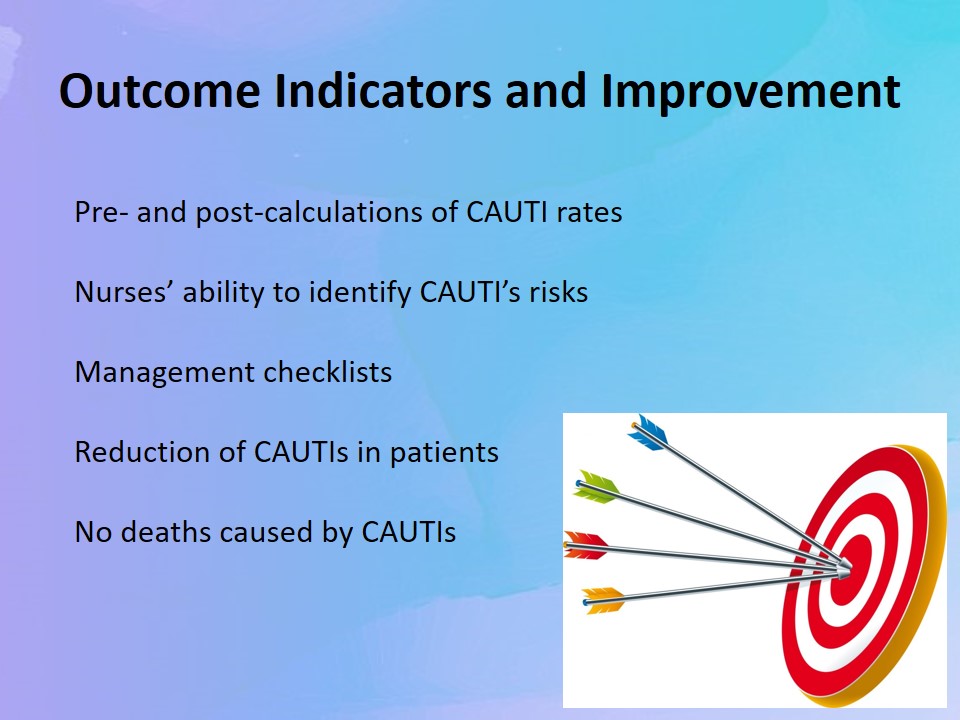
Conclusion
- CAUTIs cannot be ignored in nursing care.
- Structural, Process, and Outcome NSIs must be discussed.
- Improvement of nursing care occurs at different levels.
- Quality of human life can be increased with CAUTI management.
In general, this presentation illustrates that the number of CAUTIs can be reduced among patients in hospital settings. If nurses are provided with special education and training opportunities, there is a high probability they can improve their qualifications and offer better services to their patients. CAUTI is a serious healthcare problem that cannot be ignored by medical staff. There are many structural, process, and outcome indicators that explain the importance of this topic selection and discussion. It is not enough to improve some aspects of nursing work; many different levels of care have to be evaluated. Management of CAUTIs and in-time interventions may considerably improve the quality of human life and decrease the risks of deaths due to CAUTIs.
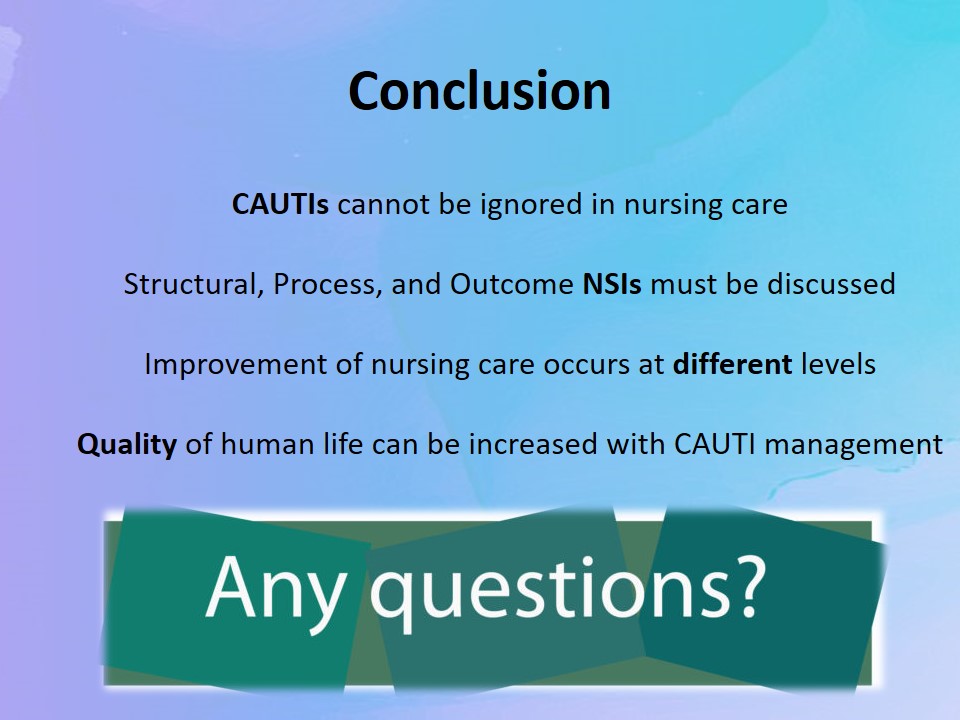
References
Heslop, L., & Lu, S. (2014). Nursing-sensitive indicators: A concept analysis. Journal of Advanced Nursing, 70(11), 2469-2482. Web.
Wynne, R., Patel, M., Pascual, N., Mendoza, M., Ho, P., Qian, D., … Hobbs, L. (2014). A single centre point prevalence survey to determine prevalence of indwelling urinary catheter use and nurse-sensitive indicators for the prevention of infection. Healthcare Infection, 19(1), 13–19. Web.